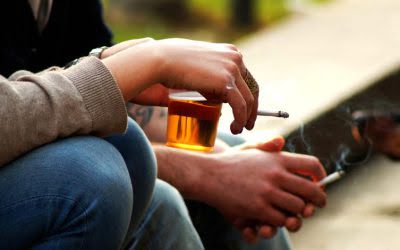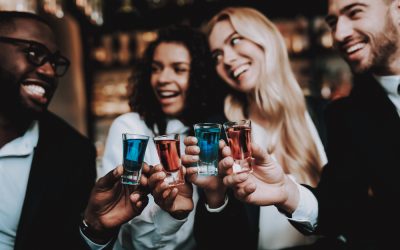Within that overall framework, diverse psychology specialty areas focused on personal processes – beliefs, about the world and their own agency, personal goals, emotions, and behavior – in interaction with biological and social processes. These developments in psychology have wide implications and they surface again when considering biopsychosocial models, such as of impacts of social disadvantages on health, and of pain and service use, considered in Part 2, and models of clinical https://parliamentobserver.com/2024/05/27/top-5-advantages-of-staying-in-a-sober-living-house/ care, in Part 3. In sum, the BPSM can serve as a useful tool for highlighting psychosocial factors important to health outcomes. It is not, however, a valid, authoritative, or superior explanatory model of disease. Treating it as such has created an epistemic void that has produced the wayward form of BPSM discourse described here. Participants in wayward discourse typically suggest they are presenting insights about disease gleaned through applications of the BPSM.
- As Hyman (2007) has written, “neuroscience does not obviate the need for social and psychological level explanations intervening between the levels of cells, synapses, and circuits and that of ethical judgments” (p.8).
- These points suggests that “gun violence disease” is not necessarily a fringe argument, and that its potential to shape medical and political practices should be taken seriously.
- Furthermore, epigenetic modifications acquired in one generation can be inherited by the next generation and can involve behavioral or social transmission (107), including the transmission of trauma (216).
Pain Management
Gillett criticizes theories of decision-making that conceptualize choice as autonomous phenomenon only if inner mental states or networks cause it. Rates of substance use and dependence vary across, and even within, cultural and social groups (Wallace 1999; Wallace, Bachman, O’Malley et al. 2002). Factors such as availability and peer modeling account for the inter- and intra-group disparities (Thomas 2007).
- We have children, and my use of substances is not compatible with raising children or anything else.
- Biopsychosocial approaches to future nutrition research will hopefully renegotiate the boundaries between physical and mental health by targeting the gut-brain axis and examining novel outcomes.
- You can further explore poverty, race, gender, and other examples of intersectionality that may play a role in a person’s substance use as you are working with them, ensuring your work is culturally and gender sensitive.
- Meanwhile, authors from around the globe have suggested that nutrition interventions may be helpful in combating the opioid crisis (156, 198, 221).
- The BMM would predict scientific-explanatory reduction to primary biological causes only across the whole of health, like the biomedical models of infectious diseases (or of effects of lesions or of genes of major effect).
A Comprehensive Understanding of SUD and Recovery

The notion of free choice becomes particularly troublesome due to the conscious experience of acting freely. As Searle (2004) argues, “there is a striking difference between the passive character of perceptual consciousness and the active character of what we might call ‘volitional consciousness’“ (41). Both social norms and laws influence attitudes, perceptions, and beliefs of the effects of substances and considerably affect consumption rates (Babor, Caetano, Casswell et al. 2003; Hawkins, Catalano, and Miller 1992). Proponents of a ‘war on drugs’, for example, believe that laws and policies that are lenient towards substance use are linked with greater prevalence of use and criminal activity.
A revitalized biopsychosocial model: core theory, research paradigms, and clinical implications

Substances such as alcohol and legal or illegal drugs have been used for recreation, celebration, and coping with difficult life situations and health problems [37]. Several theories and models have been developed to understand the concept of substance use disorder (SUD), focusing on, Sober House for example, self-medication, behaviour, self-regulation, neurobiology or social living conditions [25, 33, 47]. The World Health Organization (WHO) and Norwegian health authority use a comprehensive, multi-disciplinary understanding of SUD based on a biopsychosocial approach.
Thus, numerous psychological factors and experiences can increase the risk of changing how one feels (or regulating emotions) via drugs of abuse. The multifaceted disorder needs a multifaceted conceptualization, and we find that in the biopsychosocial model of addiction (Marlatt & Baer, 1988). Rather than pinpoint the one thing that causes addiction, we now understand that a constellation of factors contributes to a person being more or less at risk for addiction. Giving patients labels that selectively emphasize certain aspects of their suffering and imply diseasehood without due justification is problematic. In addition to having the potential to undermine research in the ways discussed above, it creates ethical problems. Patients have a right to know the true state of medical knowledge on their ailments.

Upon closer inspection, however, we find that key claims advanced often rest on flawed arguments and rhetorical maneuvers. We can see a relatively transparent attempt to harness this power of wayward discourse in the violence-as-a-disease literature. Since its articulation by George Engel (1977), the biopsychosocial model (BPSM) has enjoyed growing acceptance and use in medicine. A recent major work on the BPSM described the model as having “become the orthodox overarching model for health, disease and healthcare” (Bolton and Gillett 2019, 5).
HYPOTHESIS AND THEORY article
- As to dysfunction, this has to involve disruption to regulation (however caused), because physicochemical laws cannot be disrupted.
- Mu receptors activate analgesia, respiratory depression, miosis, euphoria, and reduced gastrointestinal motility.
- The literature in this area does not provide a meaningful definition of “biopsychosocial disease” and then demonstrate that gun violence qualifies.
- Despite its almost conspicuously contrived nature, “gun violence disease” is treated as though it were a disease like any other.
The dynamic within these relationships can contribute to or inhibit the emergence of a complex behaviour such as problematic substance use, while regulating both inputs and outputs from changing internal and external environments. The complex behaviour contributes both positive and negative feedback, and thus affects how the complex behaviour emerges. Systems theory, therefore, balances reductionism and the intrinsic heterogeneity within systems. All the informants received some degree of therapy and support from social services or specialised healthcare facilities during the years after inpatient SUD treatment in Tyrili.
Whole Person Healthcare The Biopsychosocial Spiritual Model of Medicine. By Doodle Med.(
Second, and the preceding points notwithstanding, wayward discourse can also yield unstable illness constructs that place research on a fundamentally chaotic path, especially over the longer term. As noted above and in the Appendix, people meeting the diagnostic criteria for TMD manifest quite varied symptoms and problems (high patient heterogeneity) and also often qualify for other diagnoses (high comorbidity). Because such observations tend to make it less likely that a construct corresponds to a distinct disease, they are normally interpreted as a mark against validity and a sign that a construct may need to be revised.
Three received opioid maintenance therapy (OMT) and were in contact with a GP or therapist. Eight had been in treatment for trauma, anxiety, depression, psychosis or insomnia, and three had or were waiting for treatment for ADHD. Also, four informants mentioned participation in activities and support groups run by NGOs, as described above. Five informants had received inpatient treatment for substance use and mental health problems or detox several times since they left Tyrili.